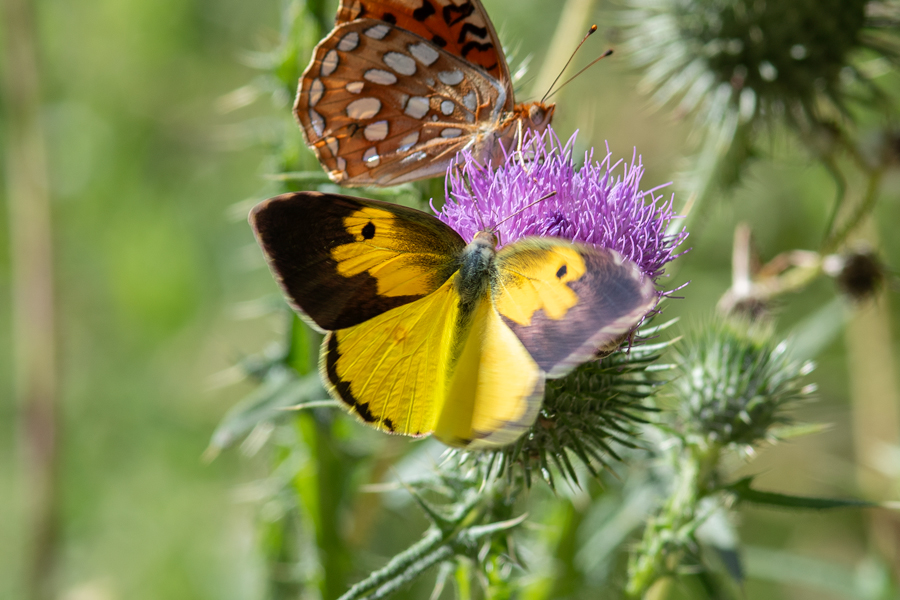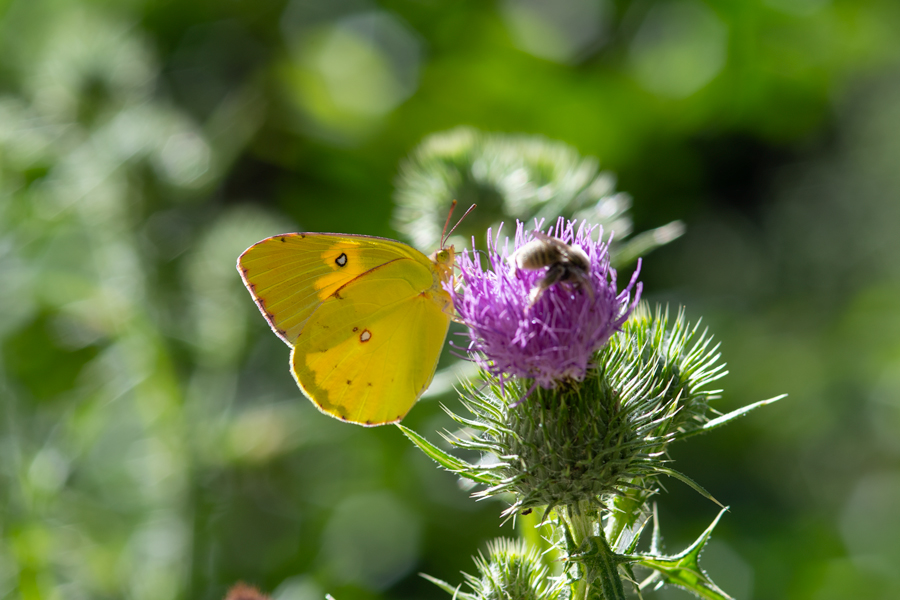Zerene cesonia cesonia
Southern Dogface
This butterfly isn't encountered in southern California nearly as often as is the California dogface, even though it is far more widespread overall - from the U.S. through South America - in eight named subspecies. To distinguish a cesonia from eurydice, there are a few things to look for. With males, the "dogface" pattern on the forewing should have a purplish sheen in the latter, and is yellow in the former. The hind wings of cesonia usually have a thick black edge, lacking in eurydice. For females, the California dogface is basically all yellow on the dorsal side, lacking the dogface entirely. The female southern dogface is somewhat similar to a male, but the forewing black area is infused with yellow scales rather than solid black, and the hind wings edges are less boldly marked. There are, of course, variations, so "your mileage may vary". The existence of hybrids - though rare - adds a dash of spice to the mix.
While the California dogface uses species of Amorpha (false indigo) as its caterpillar food plant, this one mostly uses Marina parryi (commonly known as false prarie clover, Parry's marina or Parry's dalea), also in the Fabaceae. In our Joshua Tree book, Gordon Pratt says that Dalea searlesiae (Searles' prarie clover) is used in the Providence Mountains, and that Dalea mollis and D. mollissima (both called silky dalea) are possible food plants. But what does it use around Big Bear, where Amorpha is so common?


